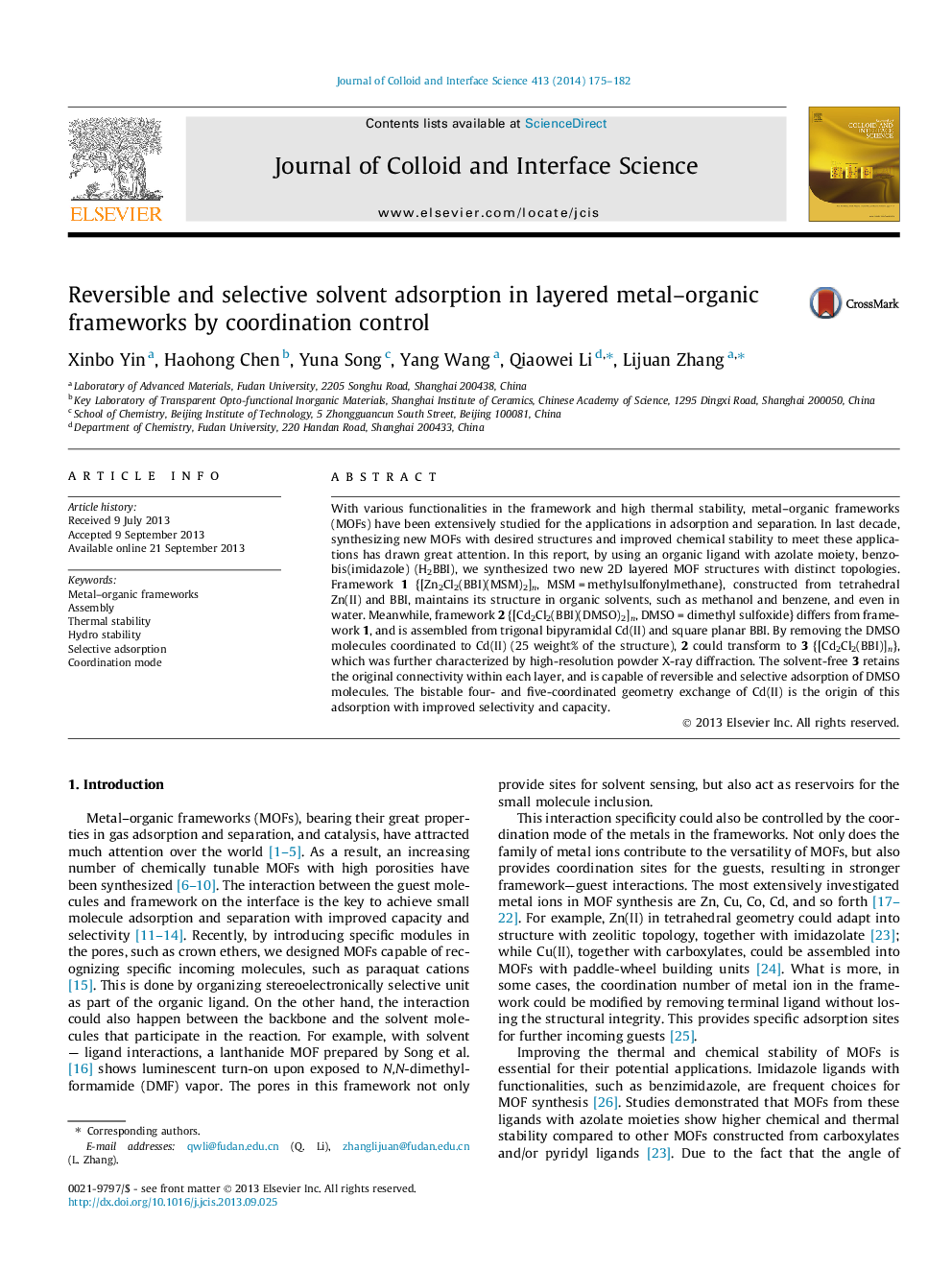| Article ID | Journal | Published Year | Pages | File Type |
|---|---|---|---|---|
| 607499 | Journal of Colloid and Interface Science | 2014 | 8 Pages |
•Two new layered metal–organic frameworks assembled from benzo-bis(imidazole).•High thermal and chemical stability of the metal-imidazolate frameworks.•Structural transformations characterized by high-resolution powder X-ray analysis.•Reversible and selective adsorption of DMSO molecules on the interface.
With various functionalities in the framework and high thermal stability, metal–organic frameworks (MOFs) have been extensively studied for the applications in adsorption and separation. In last decade, synthesizing new MOFs with desired structures and improved chemical stability to meet these applications has drawn great attention. In this report, by using an organic ligand with azolate moiety, benzo-bis(imidazole) (H2BBI), we synthesized two new 2D layered MOF structures with distinct topologies. Framework 1 {[Zn2Cl2(BBI)(MSM)2]n, MSM = methylsulfonylmethane}, constructed from tetrahedral Zn(II) and BBI, maintains its structure in organic solvents, such as methanol and benzene, and even in water. Meanwhile, framework 2 {[Cd2Cl2(BBI)(DMSO)2]n, DMSO = dimethyl sulfoxide} differs from framework 1, and is assembled from trigonal bipyramidal Cd(II) and square planar BBI. By removing the DMSO molecules coordinated to Cd(II) (25 weight% of the structure), 2 could transform to 3 {[Cd2Cl2(BBI)]n}, which was further characterized by high-resolution powder X-ray diffraction. The solvent-free 3 retains the original connectivity within each layer, and is capable of reversible and selective adsorption of DMSO molecules. The bistable four- and five-coordinated geometry exchange of Cd(II) is the origin of this adsorption with improved selectivity and capacity.
Graphical abstractFigure optionsDownload full-size imageDownload high-quality image (180 K)Download as PowerPoint slide
